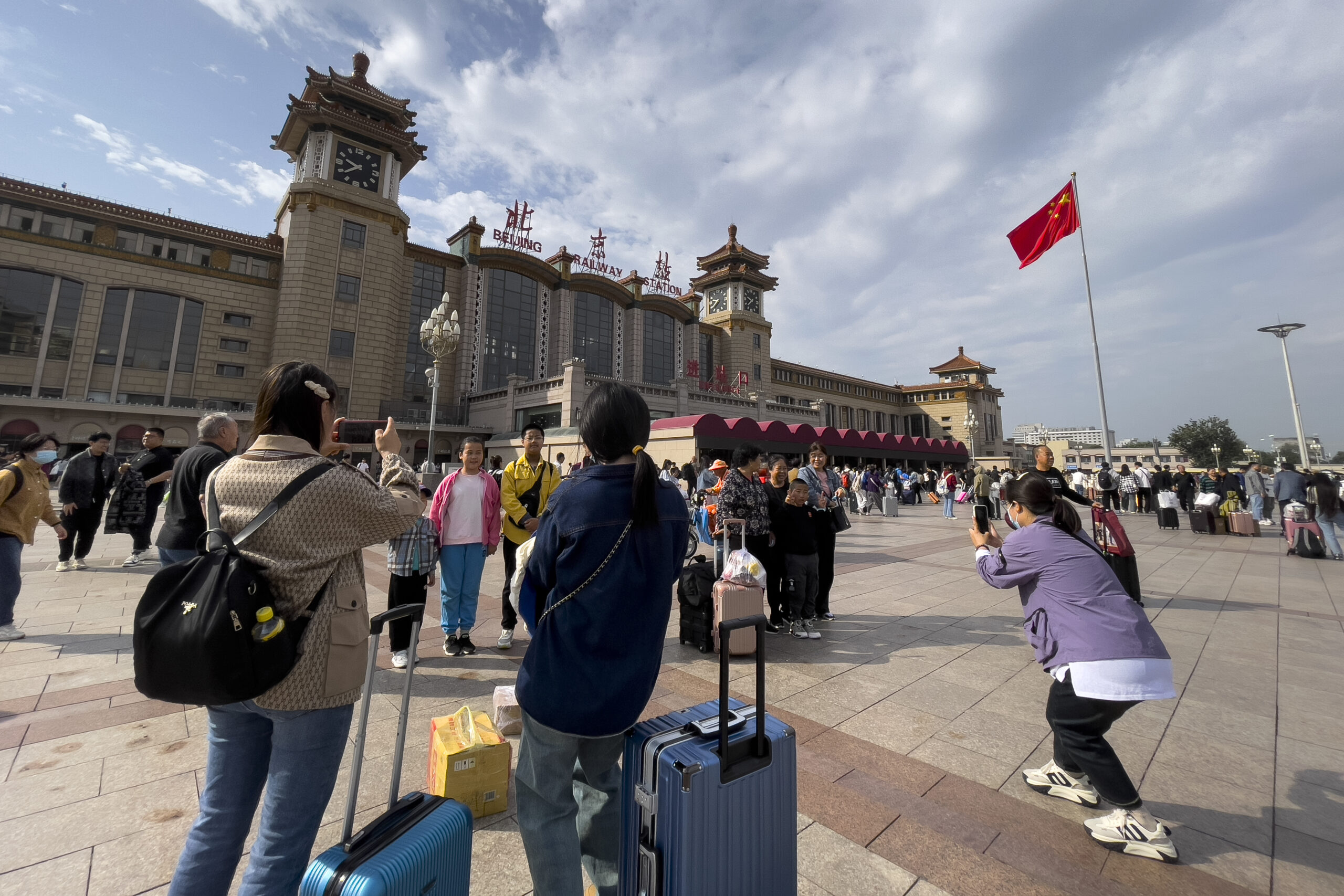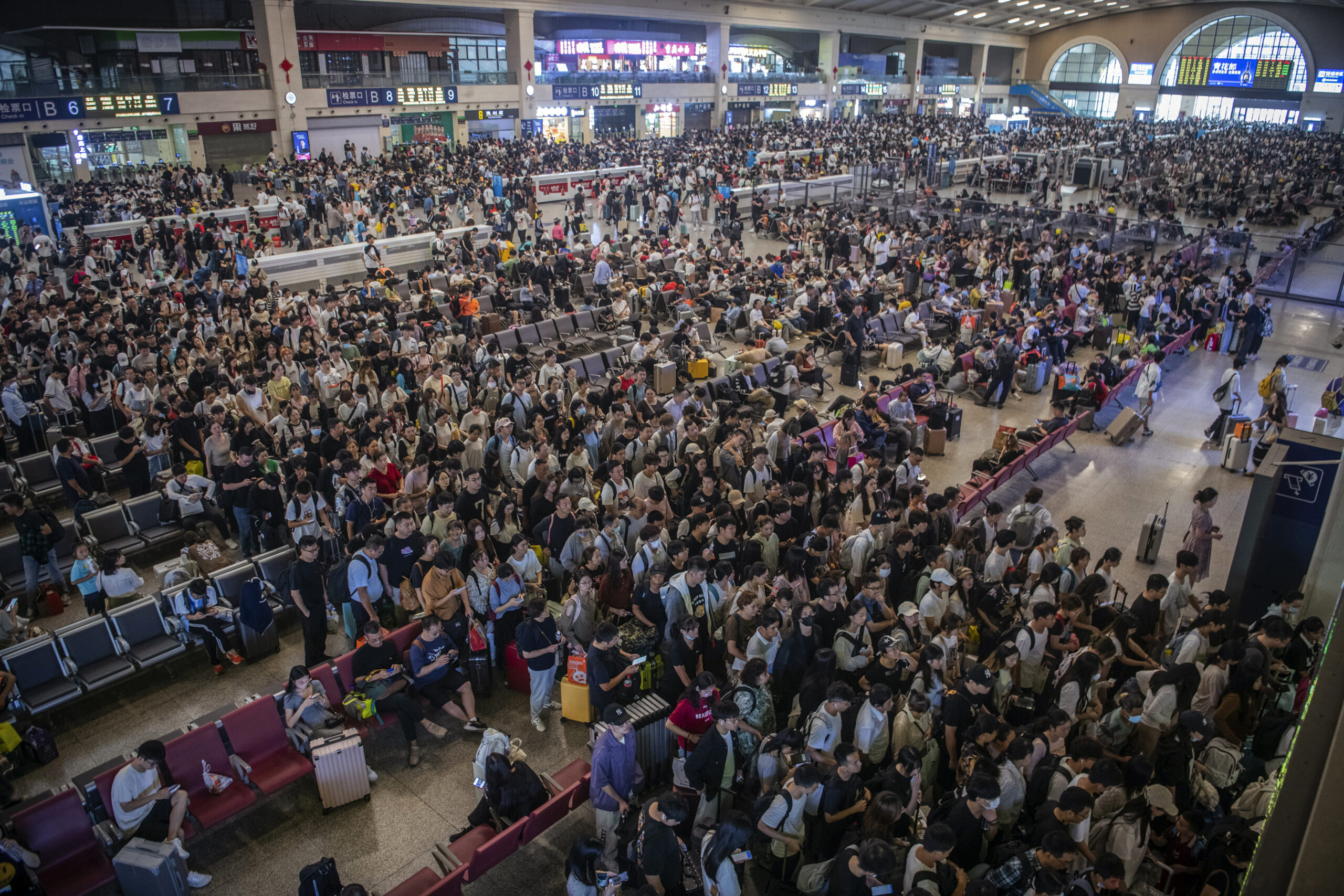Millions take to China’s railways, roads, air for holiday since end of zero-COVID.
HONG KONG (AP) – Many millions of Chinese tourists are expected to travel within their country, splurging on hotels, tours, attractions and meals in a boost to the economy during the eight-day holiday period that began on Friday.
This year’s holiday began with the Mid-Autumn Festival yesterday and also includes the October 1 National Day. The public holidays end on October 6.

Typically hundreds of millions of Chinese travel at home and overseas during such holidays. The eight-day-long holiday is the longest week of public holidays since COVID-19 pandemic restrictions were lifted in December. Outbound tourism has lagged domestic travel, with flight capacities lagging behind pre-pandemic levels.
Big cities like the capital, Beijing, Shanghai, and southern cities like Shenzhen and Guangzhou are favored destinations. Smaller cities, such as Chengdu and Chongqing in southwest China also are popular.
All that travel is a boon for the world’s number two economy: During the week-long May holiday this year, 274 million tourists spent CNY148 billion (USD20.3 billion).

“Over the last few years with the pandemic, there’s been really strong pent-up demand,” said managing director at the online travel booking platform Trip.com Group Boon Sian Chai. Both domestic and outbound travel have “recovered significantly,” but travel within China accounted for nearly three-quarters of total bookings, Chai said.
China Railway said it was expecting about 190 million passenger trips during the September 27-October 8 travel rush, more than double the number of trips last year and an increase from 2019, before the pandemic started.
In Guangzhou and Shenzhen, extra overnight high-speed trains will operate for 11 days to cope with a travel surge during the long holiday, according to the China Railway Guangzhou Group Co, Ltd.
Another 21 million passengers are expected to travel by air during the holiday, with an average of about 17,000 flights per day, according to the Civil Aviation Administration of China. More than 80 per cent of those flights are domestic routes.
CEO of Liurenyou International Travel Agency Jia Jianqiang said Chinese are splurging on more luxurious travel.
“Many people are now also inclined towards more customised, high-end tours compared to the large group tours that were popular (before the pandemic),” Jia said.
For many Chinese, long public holidays such as Golden Week are the best time to travel, since paid vacation can be as few as five days a year.
“Most Chinese don’t have long holidays, so this time of the year is when everyone can take the longest break and the only time to travel for fun,” said Fu Zhengshuai, an IT engineer and photography enthusiast who often travels alone to remote areas in China such as far western Qinghai and Xinjiang.
The downside of travelling during such big holidays is that everyone else is out there, too, and prices of tickets to attractions, food, and accommodations are high, Fu said.
For student Ma Yongle, travelling during big holidays means long waiting times, huge crowds, and heavy traffic. Train tickets often are sold out.
“I saw more people than scenery. I spent longer time waiting than eating. Train tickets were sold out quickly and traffic was heavy,” Ma said. “More time was wasted and little was left for enjoying the scenery, which spoiled my mood.”
She has since adopted what is referred in China as a “special forces travel trend” where tourists don’t stay overnight at a destination, but only take day trips to save money.








